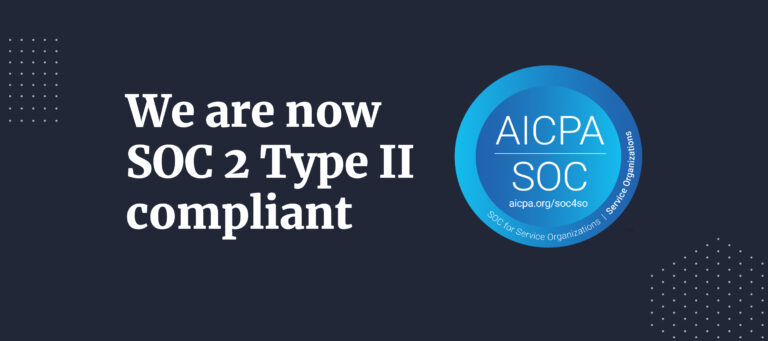As manufacturing and distribution businesses have invested in new digital systems, there’s been growing demand for data visualization and analysis tools, also referred to as Business Intelligence (BI) tools. BI software is meant to help business leaders understand the data that’s being collected by their new systems—in the cases of manufacturing leaders, that means orders received, orders shipped, revenue trends, inventory levels, etc.
But here’s the problem with BI tools: They can’t really help the Fulfillment Manager who’s just trying to figure out what’s causing delayed orders right now.
A Fundamental BI Tool Limitation
BI tools work in a straightforward way: Connect to one or more databases from business systems like an ERP, WMS, CRM, etc., and then allow analysts to drag and drop data fields around to create reports from those data sources.
The process looks like this:

Systems like ERP record the business numbers (inputs, outputs, financials) and BI tools “slice and dice” that data into new reports that show trends, date-range comparisons, and maybe even forecasts.
This setup allows business leaders to get a clearer understanding of things like production output over time, the impact of marketing campaigns on sales, product performance, seasonal fluctuations, etc. With a smart (and highly paid) analyst (or several), just about anything that your system is recording can be plotted out over time.
Here’s the catch that creates a fundamental BI tool limitation: the system isn’t recording everything. For example, if you’re running your order management process on an ERP and you want to look into Operations, or process performance, BI tools can’t show you much of anything. How long does it take to enter or approve an order? How many orders are waiting to be processed right now? Who enters orders accurately and who makes mistakes?
The biggest problem here is that the data you need isn’t in the database and therefore, BI tools can’t visualize it. Seems obvious. You can’t see something that isn’t there.
Operational Handicap
Here’s the situation: Operations leaders rely on the same business systems (like ERP) to manage their teams and workflows, but those systems don’t store the kind of data they would need to understand and improve their processes.
ERP systems will generally store order records and associated financial data. But they generally aren’t set up to record all the activity that occurs in the system. That would be user actions like entering orders, approving orders, adjusting orders, processing cancellations, etc. (i.e. the work being done within the business). So if you’re trying to figure out what’s going on, there’s not much for the ERP, or your BI tools, to show you.
To make things worse for operational analysis, the data that is there is often noisy, disorganized, poorly structured, poorly labeled, and fragmented across multiple systems and databases. It’s a mess. The difficulty of dealing with the mess adds time and cost to any analysis work, if it doesn’t prevent it altogether.
But wait, there’s more! Time is another limiting factor here, and it applies in two ways. First, it takes time (often a lot of it) to prepare usable reports and dashboards. And if you need to look at something that wasn’t accounted for in the initial report, guess what? More time. Second, BI tools necessarily offer retrospective views – they are looking at what’s already happened in the past. Analyzing historical data is certainly important, but it’s less useful when your decisions are focused on what’s happening right now.
Beyond availability and timing, BI tools also depend on system capability and user proficiency. Not all tools can handle the type of calculations that might be required to get to the answers you need, and not all analysts have the expertise to create those reports. Highly-trained data scientists are an expensive and limited resource.
Further, if analysts or consultants are creating your reports, you have to take their subjectivity into account. Are they, consciously or unconsciously, skewing the reporting to show more favorable outcomes? (The answer to that is yes, at least a little.)
The Solution for Operations
At Chassi, we’re taking a different approach to this problem—one that allows us to work around the current limitations of BI tools in the Operations space. Here’s how it works:
- “Listen in” on the activity within an ERP system like SAP Business One. Collect the transactions and user actions being taken within that system so that they’re available for analysis.
- Enrich the data (generate timing data based on the activity recorded, and record metadata like order type, order size, who made it, who entered it, etc.)
- Model the data to organize it and create context (this is where the fancy math happens).
- A similarity model makes sense of noisy, fragmented, and disorganized data.
- A capacity model looks at how much work is being/can be done at each step in the process.
- Show what’s happening right now in a simple, consumable UI that business leaders can access directly (a live, dynamic map).
The result of this approach is basically “GPS for your business”. It allows Operations leaders to immediately see where work is flowing smoothly and where problems are arising along the order process.
Our approach eliminates:
- Data gaps – We harvest the operations data that isn’t being stored in the database. We also generate our own timing data, and add additional contextual information.
- Data processing limitations – The fancy math is already done.
- The analysts – You can keep the financial analysts, but you won’t need new ones for Operations.
- BI tools with PHD required – If you’re getting good-enough financial reports out of your existing ERP, you may not need to add any BI tools at all.
At Chassi, we’re focused on helping manufacturing and distribution businesses continuously improve their order fulfillment processes. No teams of analysts producing chart after chart, graph after graph – just actionable, intuitive insights. So, if you’re a leader who’s looking for total operational clarity in this critical area, we’d love to speak with you!





